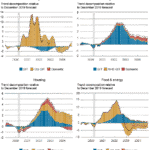Options and derivatives offer powerful tools for managing risk, enhancing returns, and implementing complex investment strategies. But with that power comes exposure to unique and significant risks that can catch even experienced investors off guard.
Whether you’re just beginning to explore options trading or are considering using derivatives to hedge or speculate, it’s critical to understand the inherent risks and how to manage them.
In this blog, we’ll explore:
- What options and derivatives are
- The different types of risk involved
- Real-world scenarios that highlight these risks
- Risk mitigation strategies
- Who should (and shouldn’t) trade derivatives
What Are Options and Derivatives?
Derivatives are financial contracts whose value is based on the price of an underlying asset, such as stocks, bonds, commodities, interest rates, or market indexes.
Common Types:
- Options (Calls and Puts)
- Futures contracts
- Swaps (e.g., interest rate swaps, credit default swaps)
- Forwards (typically used by institutions)
These instruments are used for hedging, income generation, or speculation—but they involve far more complexity than standard buy-and-hold investing.
Why Risk in Derivatives Is Different
Unlike traditional stock investing, derivatives often involve:
- Leverage (you control a large amount of value with a small amount of money)
- Time decay (particularly in options)
- Complex payoff structures
- Counterparty risk (in OTC derivatives)
This creates the possibility for both amplified gains and severe losses—sometimes more than the amount invested.
Key Risk Factors in Options & Derivatives Trading
1. Market Risk
As with any investment, prices can move against your position. But in derivatives, price changes can result in exponentially larger losses.
- Example: Buying a call option on a stock that drops in value before expiration means the option could become worthless, resulting in a 100% loss.
2. Leverage Risk
Many derivatives require only a small upfront cost (premium or margin), allowing for high leverage. This amplifies both profits and losses.
- Example: If you put $1,000 into options controlling $50,000 in stock, a 10% move could double your money—or wipe you out.
3. Time Decay (Theta Risk)
Options lose value over time—especially as expiration approaches. This is known as time decay.
- Example: A profitable trade can still lose money if the underlying stock doesn’t move quickly enough in your favor.
4. Volatility Risk (Vega)
Options pricing is heavily influenced by implied volatility. A drop in volatility can reduce option premiums—even if the stock moves as expected.
- Example: You buy an option expecting high volatility, but the market calms down—leading to a drop in value of your position.
5. Liquidity Risk
Not all options or derivatives have active markets. Lack of buyers or sellers can make it hard to enter or exit trades at fair prices.
- Example: Holding a low-volume option could mean wider bid-ask spreads and poor execution prices.
6. Counterparty Risk
This mainly applies to over-the-counter (OTC) derivatives, where your gains rely on the other party’s ability to pay.
- In the 2008 financial crisis, Lehman Brothers’ collapse highlighted this risk, especially in the credit default swap market.
7. Assignment Risk (for Sellers)
If you sell options, you might be assigned unexpectedly, especially if the option goes in the money before expiration.
- This can lead to unexpected stock purchases or sales—possibly at unfavorable times or prices.
Real-World Examples of Derivatives Risk
Barings Bank Collapse (1995)
- A rogue trader lost over $1 billion in unauthorized derivatives trades on the Nikkei 225 index.
- The bank was wiped out—despite being over 200 years old.
Archegos Capital (2021)
- Used total return swaps and other leveraged derivative positions.
- When the market moved against them, they triggered billions in losses for banks like Credit Suisse and Nomura.
How to Manage Derivative Risk
1. Know What You’re Trading
- Understand Greeks (Delta, Gamma, Theta, Vega, Rho)
- Be clear on your max loss and breakeven points
- Know the impact of volatility and time decay
2. Limit Position Sizes
- Never over-allocate to a single trade or strategy
- Use position sizing to cap potential losses
3. Set Stop-Losses and Alerts
- Monitor your positions daily
- Use stop-loss orders to automatically exit losing trades
4. Use Risk-Defined Strategies
- Spread strategies (like verticals or iron condors) limit your losses
- Avoid naked calls/puts unless you’re highly experienced
5. Have a Clear Exit Plan
- Know when and why you’ll take profits or cut losses
- Don’t trade based on hope—trade based on rules
6. Use a Practice Account First
- Most platforms offer paper trading for options
- Practice strategies without risking real money
Who Should Avoid Derivatives?
Derivatives may not be suitable for:
- Beginner investors without a firm grasp of the market
- Individuals with low risk tolerance
- Those lacking time to actively monitor trades
- Anyone who doesn’t fully understand the worst-case scenario
Always consult a financial advisor or complete your own due diligence before trading.
Final Thoughts: Trade Smart, Not Just Bold
Options and derivatives can be excellent tools—when used properly. They offer flexibility and precision not available in traditional investing. But without a sound understanding of their risks, they can quickly become dangerous.
If you’re exploring options or derivatives, ask yourself:
- Do I understand the trade fully?
- Can I afford the potential loss?
- Is this strategy aligned with my goals?


